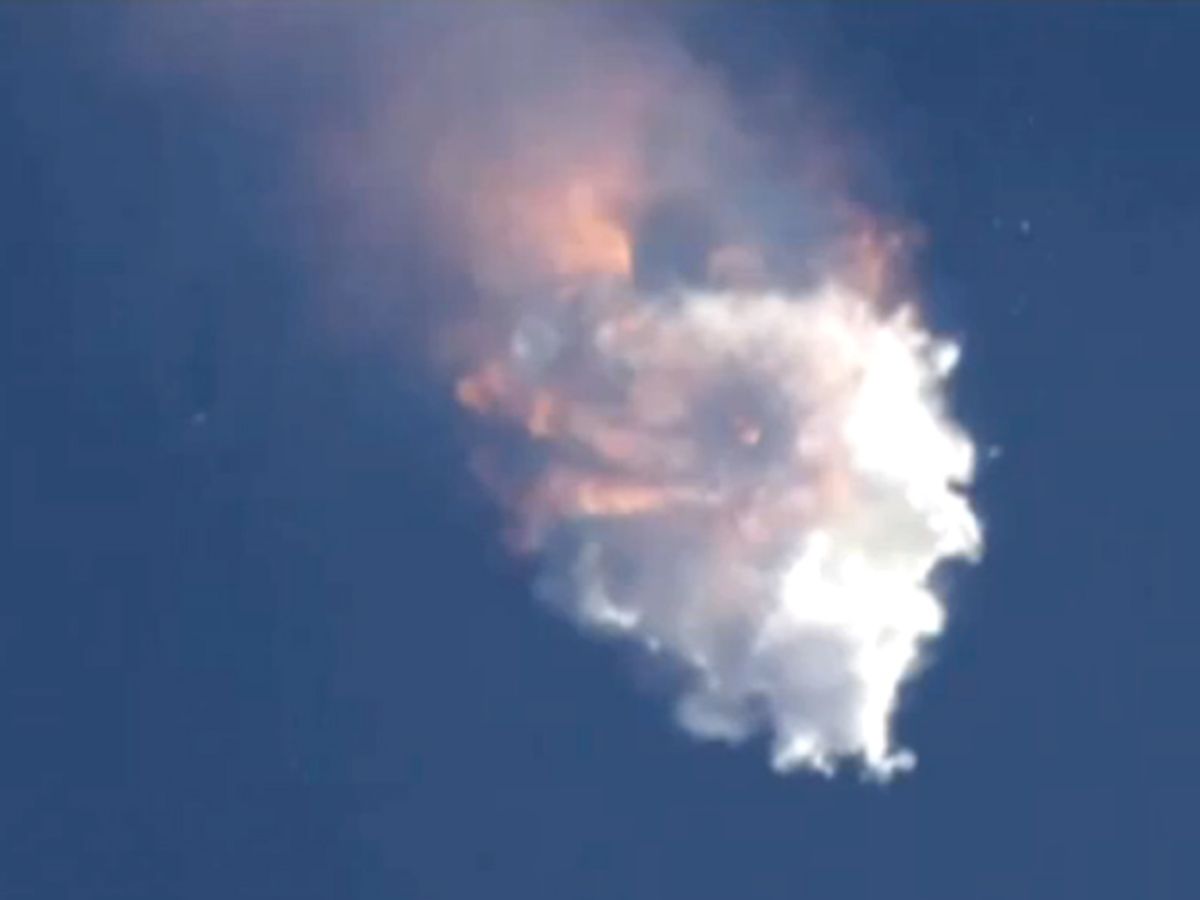A SpaceX resupply mission to the International Space Station ended prematurely when the Falcon 9 rocket exploded just minutes after launch. The rocket failure won’t likely change NASA's planned reliance on private spaceflight contractors such as SpaceX, but it represents the latest in a string of failed attempts to resupply the space station.
The loss of SpaceX’s Falcon 9 comes just months after a Russian Progress cargo vehicle lost control during a resupply mission in May. It also follows the explosive failure of an Antares rocket during a resupply run by Orbital Sciences, another private spaceflight firm in October 2014. Together, the failures have dealt a blow to both of the private spaceflight firms responsible for NASA’s contracted resupply missions and forced NASA to rely on a Russian Soyuz rocket launch in July and a Japanese cargo ship in August for resupply in the short term.
“We did expect to lose some cargo vehicles,” said William Gerstenmaier, director of space operations at NASA Headquarters, in a press event covered by SpaceFlightNow. “I didn’t think we’d lose them all in a one year time frame, but we have. There’s no negligence here, there’s no, really, problem with (the commercial cargo program), it just shows the challenges of spaceflight in general.”
The Falcon 9 rocket suffered a problem involving an “overpressure event in the upper stage liquid oxygen tank” that came before the first rocket stage shutdown, according to a SpaceX blog post. But the root cause of the failure remains unknown “after several thousand engineering-hours of review,” said Elon Musk, founder and CEO of SpaceX, in a Twitter update. Musk added said the data suggested a “counterintuitive cause.”
SpaceX’s setback also prevented an additional attempt to test the Falcon 9’s first stage as a reusable rocket by having it land vertically on a drone ship after launch. Such testing is part of the spaceflight firm’s long-term plan to slash launch costs. (Three previous reusable rocket tests ended in failure.)
Gerstenmaier said that the space station crew was in no danger because of the loss of supplies. But the SpaceX resupply run was carrying important space station upgrades such as the first of two docking adapters intended to prepare the space station for the arrival of crewed U.S. spacecraft in 2017.
Such failures may provide a bit of breathing room for United Launch Alliance (ULA), a private launch venture formed by Boeing and Lockheed Martin and a rival to younger spaceflight firms such as SpaceX and Orbital Sciences. SpaceX’s Falcon 9 rockets cost about $50 million less than ULA’s Atlas rockets at an advertised price of about $60 million each, according to SpaceFlightNow.
SpaceX also recently became certified by the U.S. Air Force to compete for contracts to launch secretive U.S. Department of Defense payloads into space. Both the U.S. military and NASA can at least fall back on the ULA rockets while SpaceX and Orbital Sciences work out the kinks in their launchers. Orbital Sciences has enlisted ULA to provide an Atlas rocket to help launch its Cygnus spacecraft on its next resupply run while its own Antares rocket remains grounded.
Jeremy Hsu has been working as a science and technology journalist in New York City since 2008. He has written on subjects as diverse as supercomputing and wearable electronics for IEEE Spectrum. When he’s not trying to wrap his head around the latest quantum computing news for Spectrum, he also contributes to a variety of publications such as Scientific American, Discover, Popular Science, and others. He is a graduate of New York University’s Science, Health & Environmental Reporting Program.



